Kirby Larson's Blog, page 40
December 28, 2012
Friend Friday
I first met Terry Trueman at a Children's Literature Festival in Warrensburg, Missouri. Terry is one of those larger-than-life kind of people and I am not. So our first meeting would not have led me to believe we could become friends. But Terry's heart is huge and we have shared many encouraging (and discouraged!) emails back and forth. Though it's been out since August, I'm pleased to celebrate his latest book, Life Happens Next.
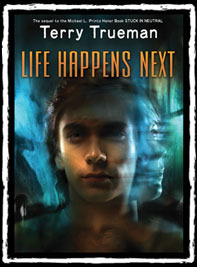
Here are the official details:
Stuck in Neutral, a Printz Honor Book, introduced the world to Shawn McDaniel, a fourteen-year-old kid with cerebral palsy. But what happens next?
Shawn's got a new perspective on life. But no one has a clue. That's because they can see only his wheelchair, his limp body, his drool. What they don't see? His brain, with perfect auditory memory. And his heart, which is in love with a girl. And his fierce belief that someday someone will realize there's way more to him than his appearance.
How do you connect with others when you can't talk, walk, or even wave hello? In the sequel to Stuck in Neutral, which ALA Booklist called "an intense reading experience," Shawn McDaniel discovers a new definition of "normal" and finds that life happens next for everyone.
Before you read the book, be sure to hop on over to Terry's energetic and engaging website.

Here are the official details:
Stuck in Neutral, a Printz Honor Book, introduced the world to Shawn McDaniel, a fourteen-year-old kid with cerebral palsy. But what happens next?
Shawn's got a new perspective on life. But no one has a clue. That's because they can see only his wheelchair, his limp body, his drool. What they don't see? His brain, with perfect auditory memory. And his heart, which is in love with a girl. And his fierce belief that someday someone will realize there's way more to him than his appearance.
How do you connect with others when you can't talk, walk, or even wave hello? In the sequel to Stuck in Neutral, which ALA Booklist called "an intense reading experience," Shawn McDaniel discovers a new definition of "normal" and finds that life happens next for everyone.
Before you read the book, be sure to hop on over to Terry's energetic and engaging website.
Published on December 28, 2012 20:34
Friend Friday
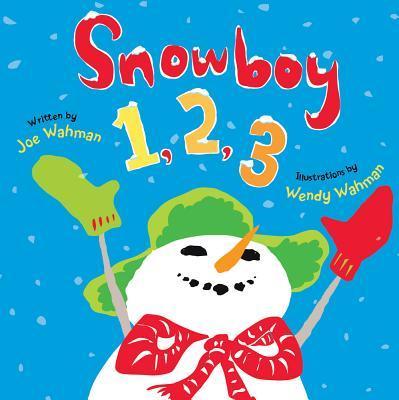
Wendy Wahman loves dogs. A lot. Me, too! Maybe that's why I was drawn to her right away the first time we met. I love her two earlier books, Don't Lick the Dog, and A Cat Like That. This time, she's teamed up with her husband to create a poetic celebration of playing in the snow. Snowboy may start out all alone but that doesn't last for long. Even though I'm not a huge fan of snow, this book makes me wish for lots of the white stuff. . .and then big mugs of hot cocoa after.
Published on December 28, 2012 07:00
December 27, 2012
Thursday's Thought
“The things people tease you for are not your weaknesses, they are your superpowers!”
Tom Angleberger
Tom Angleberger
Published on December 27, 2012 07:30
December 24, 2012
Merry Merry
I'm taking a little hiatus to enjoy my family, especially brand new Princess Esme.

Wishing you and yours much gingerbread and joy!

Wishing you and yours much gingerbread and joy!
Published on December 24, 2012 06:30
December 21, 2012
Friend Friday
Erik Brooks and I might be related. Well, he might be related to my step-great-grandmother, Hattie Inez Brooks and that's close enough for me!
Erik has a big heart and even bigger talent and I am pleased to celebrate his latest book, Who Has This Tail? It is the charming companion to Who Has These Feet and best of all there's still time to buy a copy and stuff it in a special someone's stocking.
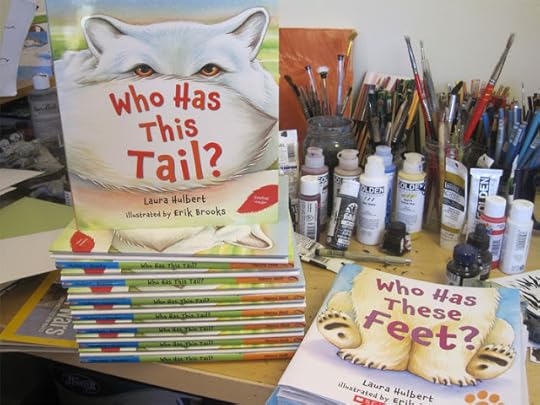 Image courtesy of Erik's awesome website
Image courtesy of Erik's awesome website
Erik has a big heart and even bigger talent and I am pleased to celebrate his latest book, Who Has This Tail? It is the charming companion to Who Has These Feet and best of all there's still time to buy a copy and stuff it in a special someone's stocking.
 Image courtesy of Erik's awesome website
Image courtesy of Erik's awesome website
Published on December 21, 2012 07:00
December 20, 2012
Thursday's Thought
“That was the trouble with life—it never quite fulfilled its promises.”
Betsy Byars, The Computer Nut
Betsy Byars, The Computer Nut
Published on December 20, 2012 07:30
December 18, 2012
Teacher Tuesday
I've never been to Niagara Falls, but if I ever get there, I am definitely going to have coffee with my new friend, Melinda DiBernardo! She goes by Mel except to her Mom and Dad. ;-)
Mel and I are just about as far apart as you can get in this great country: I'm in Seattle, and she's in Tonawanda, New York (between Buffalo and Niagara Falls). Her school, Glendale Elementary, serves about 420 students, pre-K-5.
If you're on Twitter, follow Mel: @gLibraryMel; she's not a regular blogger but you can find her wiki here.
You know the drill by now; first we take a peek at Mel's past!
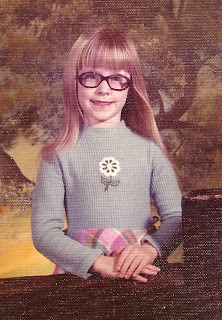
Favorite school lunch as a kid: At our school in the late 1970s, there was no cafeteria at my school, so we got to go home for lunch. My parents both worked, so I walked to my Grandmother’s house. My favorite lunch was anything at my Gram’s (but especially Beefaroni!)Best friend in grade school: Molly Shannahan. She actually went to Catholic school up the street, but she was still my very closest friend. Molly lived two houses away from me, and was like my big sister until I went away to college.Times you were the new kid in school: Never ever. I could see Central School out of my bedroom window, and walked there every day from kindergarten until 6thgrade. I stayed in the same house right up until I graduated from high school, and it was my home throughout college. I guess you could say I was a new kid when I went to college, but then, again, everyone was new. I do remember feeling very excited that I’d be able to “reinvent” myself there, and be anyone I chose to be. That was quite liberating for me!Teacher who inspired you to stretch: That’s Mr. Andy Mathias. He was my 11thgrade English teacher and he scared the daylights out of me! He was a big giant of a guy, an ex-Marine, I think. He taught me so much about the rules of grammar and spelling and technical writing! He demanded that we keep a meticulous notebook, too. Toward the end of the year, we were filling out our course requests for our senior year, and he lumbered up to my desk and pounded his huge paw on my paper. “AP English!” I was so scared, I just had to obey. AP English was very good for me, because I really got to work with some kids I thought were much smarter than I was!The one thing you always wished you could do in grade school but never achieved: Run. Jump. Play. I was the kid who was picked last for every team! I had no athletic ability whatsoever, and I always just wanted to be like the other kids…able to finish a race, hop a fence, and NOT be afraid of a ball. Some things never change, and that sure didn’t.
Now to the meat of this feature: connecting kids and books. Mel, you told me you’d like to talk about your school’s work on Interactive Read-Aloud. Could you please explain what that is?
Interactive Read Aloud (IRA) is a powerful, daily dose of reading, usually using a high-quality picture book. IRA models the difficult thinking work kids should be doing as they read independently. The teacher does not merely read the words on the page, with the kids sitting passively, receiving the teacher’s version of the story. Everyone involved thinks deeply about the text, and shares their very personal reactions to it. Kids are taught to turn and talk to a partner several times during each Read Aloud. The IRA is in addition to the formal reading workshop in each classroom beginning in kindergarten.
What prompted you to implement this program?
With the adoption of the Common Core State Standards, our district determined that our students had not yet been explicitly taught the depth of thinking that these standards require. Interactive Read Aloud models the very highest order thinking that is required of any reader.
In terms of preparation, what is involved for the teacher/librarian/staff?
It is vital that the teacher plan ahead for the Interactive Read Aloud. Our amazing coach, education consultant Ginny Lockwood, reminds us to read books “like a reader first.” The first step is to read a book and pay attention to all the places where you, as an adult reader, stop to think about a character, or ask a question, or make a prediction about the story. It is imperative to take note of places where you stop to think. Then, we use post-its to mark where we plan to stop to “think aloud” in front of kids, or where we plan to have kids “turn and talk” with a partner.
What is required of the student?
Kids must be invested in the reading, thinking, and talking work. They learn to quickly move their little bodies to sit knee-to-knee and eye-to-eye for their conversations. We teach them how to have real conversations where they debate and question one another, rather than talking “at” each other. We are still working on it.
Why do you think Interactive Read Alouds are important?
I love to hear what kids come up with as they interact with a story and each other. They are so surprising and opinionated at times. Just when I think I know what a book is “really” about, a seven-year-old will shake it up for me, and teach me something new! I find that when I let kids share what’s on their minds, it sometimes makes others more willing to accept their differences.
What skills do you see your students gaining from such a program?
They definitely pay closer attention to a text, and I hope they transfer that to their own reading (which is our goal). I also want them to become more thoughtful, caring people through this training. It is so important to me that they learn to disagree peacefully.
Can you give us an example of some of the questions generated for a particular picture book? What were some of the student answers?
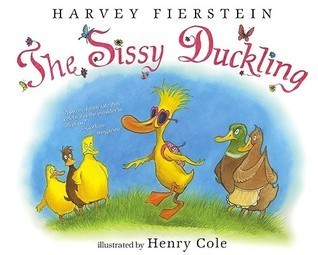
One book I love is The Sissy Duckling by Harvey Fierstein. It is about a boy duck named Elmer who likes to bake and put on puppet shows, but hates to play sports or do “boy” things. As you can imagine, he is bullied by the other ducklings. Worst of all, his own papa calls him a “sissy” and he overhears it! Elmer is so distraught, he packs his things to run away from the flock.
Several times, Elmer’s mama tries to comfort him, and I ask: “Is she doing the right thing?” Some kids get very upset that Mama doesn’t stick up for him with Papa. Other kids believe she is doing all she can. There is no right answer, and that’s what I stress with kids.
I also ask, “Should Elmer leave the flock?” Kids have very strong opinions one way or the other, and really back up their opinions with reasoning from both the text and real life.At the end of the story, one character seems to have changed, and tries to make amends with Elmer. I ask if he should forgive that character or not. Once again, kids are often split, and I encourage conversations around that.
You mentioned that you select “provocative” books. What do you mean by that? And can you give some examples of titles that work particularly well for interactive read alouds?
To me, a provocative book is one that can grab someone’s attention and light a fire within him. IRA is an opportunity to push the boundaries of what is comfortable for people to talk about. For example, some teachers may shy away from topics such as death, or gender roles, or sickness, or poverty because these topics can be uncomfortable to discuss with children whose life stories include these struggles. A provocative book may even move someone to take action, or change their beliefs about a tricky subject.
One book that is really powerful is The Enemy: A Book About Peace, by Davide Cali and Serge Bloch.
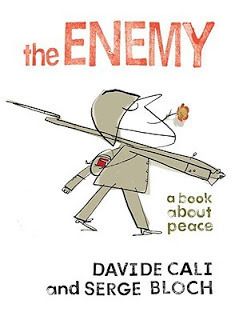
It is the story of two soldiers at war. The main character is afraid of the “beast” on the other side of the conflict. He has fought long and hard against someone he has never seen, but has only read about in his manual. He continues to fight even when he is not sure why he does so, and when he feels tired, and hungry, and abandoned. Finally, he ventures to the foxhole of his enemy, where he sees his own face in his enemy’s manual, calling him a beast as well.
Kids are shocked when they interact with this book. They are familiar with war, since it has been in the news all their lives. But many times, they have not been asked to think about the men and women on the other side of that war. This book pushes kids to think differently about war. Some of them have soldiers in their own families, and strongly support their efforts. In IRA, I have to allow for all types of responses, and not make kids think that I am right or that grown-ups have all the answers.
Other books:

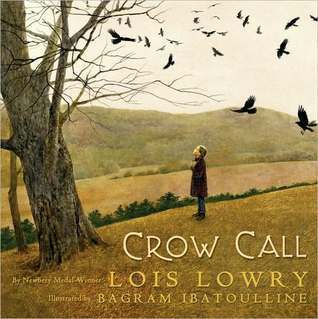
Would you encourage other teachers/librarians/schools to implement this activity? Why?
Interactive Read Aloud is very difficult to do without strong coaches and mentors to help guide your work. It is a very short portion of a teacher’s day, which can take lots of time to prepare. Sometimes, it is nice to pull a favorite read aloud off the shelf, and just read it because the kids are five, and they might love it! I do believe, however, that IRA is a worthwhile study for teachers to investigate. It can truly raise the level of thinking for your students, and yourself! It is the model of the very best thinking readers can do.
What has most surprised you about Interactive Read Alouds?
No matter how often I do it, I can always improve, and I am never “done” learning!
What do you wish I’d asked you that I neglected to ask?
I wish you’d asked if other teachers in my school use Interactive Read Aloud. The answer is a resounding Y-E-S! As a matter of fact, it is the expectation that every elementary classroom teacher in our entire district have IRA daily! That is a lot of kids and teachers reading and thinking and talking together! Our literacy coaches, administrators, and education consultants work hard to make sure we never stop improving IRA.
Interviews like this one make me want to go back to school and do it all over again! I love the power behind this concept and the faith in students and their ability to interact with and parse out stories. Thank you, Mel (I mean, Melinda!) for these thought-provoking insights.
Published on December 18, 2012 07:00
December 17, 2012
Karen Cushman!
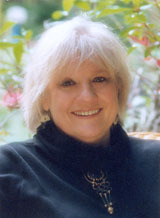
Imagine my excitement when I was asked if I wanted to host Karen Cushman on a blog tour to celebrate her latest book, Will Sparrow's Road. It took me minus two seconds to say yes! Now, I am blessed to count Karen as a friend, but when I was first starting out, she was a hero, and a mentor (though she didn't know it). A keynote she presented at the SCBWI conference in Los Angeles inspired all listeners to follow their passion -- and when Karen tells you to do something, you do it! At least I do. Her words (and modeling) gave me the courage to try my own hand at writing historical fiction. I am grateful to her for that, and grateful that she so graciously answered all of my questions, as well as some from her biggest fans.
Tell us a bit about your educational background.
I have a BA in Greek and English from Stanford, an MA in Human Behavior, and another MA in Museum Studies. What else was I prepared to do but write?
I think you could have done a million things, but I know there are a million readers who are awfully pleased you decided to become a writer. I wonder, with such a strong research background, where there things about the research required to write a novel that surprised you?
I was surprised by how little information there is about the ordinary lives of ordinary people. You want to write about Edward III, you’ll drown in information, but no one wrote down what his laundress was doing or thinking. This was especially surprising when I was researching The Ballad of Lucy Whipple. I was in California and had access to the Bancroft Library, one of the premier archives on the history of California and the North American west. I found books and letters and newspapers about merchants, miners, politicians, robber barons, plain robbers, but very little by or about woman and nothing by or about children. The situation is better now. More scholars are looking at the everyday lives of ordinary people.
So you are drawn to write about the voiceless from the past. I'm curious --what comes first for you – the time period or the character?
I don’t mean to avoid the question but I think the two come together. Character is created by the times, responds to the times, is intimately involved with the times.
It sounds like you must get yourself very grounded in a time to create character. Can you share some of your favorite research tools and techniques to accomplish that?
Starting with the Elizabethan books, I have been making good use of the internet. I found recreations of alchemical laboratories, an interactive map of Elizabethan London, a gazetteer of English fairs since the eleventh century, and a Shakespeare insult generator. One has to be wary of facts and opinions on the web, but it is a rich source of historical documents, images, and compendia. I also use material from historical enthusiast organization like the Society for Creative Anachronism and Renaissance faire groups.
What’s your favorite time period to write about? Do you need to do a lot of research to make a time period feel authentic?
My favorite period is definitely the English Middle Ages. Even as I attempt a fantasy, it’s set in a realistically medieval world. Except for the dragon. And, yes, I do a lot of research about a time period—not only facts but also values and attitudes, how people thought and felt as well as what they did.
I have driven myself crazy trying to find out, say, what time of day a child might have listened to a certain radio program during the 1940s. What do you do if you absolutely cannot track down a bit of information that you think you need for your story?
Why, I make it up. I take my best guess, informed by the research I have done.
How do you sift through, or filter, your modern mind and emotional responses so that you can capture how someone would think or feel in an era so different from your own? How do you get inside the head of characters who live in such different times (especially with differences in language, values, gender roles, etc.) in order to provide us with such believable characters, characters we relate to even if they lived 100+ years before?
Good questions about an issue that is at the core of historical fiction. I cannot walk in someone else’s shoes. I have to stand here in my own world and my own shoes. But my research helps me know about the attitudes, values, and beliefs in that other time, and I use that knowledge to make my best guess about a character’s feelings and reactions. And I know how I feel, where I experience sadness in my body, what happens to my hands and my heart when I’m afraid, how I respond to grief and loss, and I can use that. Yes indeed, it is hard, but without it, my books would be fantasy and not historical fiction.
I was on a panel with two editors and an agent last year and none of them were interested in buying/representing writers of historical fiction. Why should you and I keep writing such stories?
Because these are the stories that take us over, the characters that wake us in the morning and get us downstairs to write, the questions and situations that make us curious and excited and alive. Because historical fiction is where our passion is, no matter what editors and agents are buying.
Do you think the term "historical fiction" does your books a disservice because, in the view of some readers, it smacks too much of school work? Or is that an insulting question? I've seen Laurie Halse Anderson refer to her books as historical thrillers. If you could (or wanted to), how would you want your books categorized?
That’s not an insulting question at all. As long as “history” is a boring, school-room word, historical fiction will suffer the taint. But a historical novel is just a story about what it was like to live in another place and time. Aren’t we curious about that?
What can you explore through historical fiction that you might not be able to in contemporary fiction?
When we write historical fiction, we know how things end, how people turn out, who or what solves a problem. It is in a way comforting, especially as we live in this confusing world.
How do you know when it’s time to transition from research to writing?
I tend to do both at the same time. I’ll be writing and realize there are things I need to find out about. Or I might be researching one topic and discover something important or unexpected that I have to go back to the story and include.
How do you organize your research? Computer program? Index cards? Notebooks?
I use to make intricate notebooks with indexes and dividers and tables of contents. . Now I scribble facts, ideas, and questions any handy piece of paper—yellow pads to the back of grocery receipts. So much of what I need to know. I know. That will change if I ever tackle a completely new and foreign place or time period.
When working on a draft do you ever find yourself behaving in the Now world as though you were still in the Then world?
No, but sometimes I break into Then-speech, forsooth.
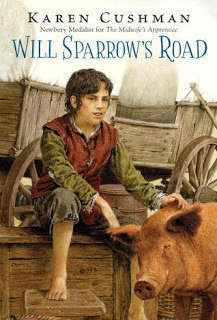
You have written about some characters who can be, to put it delicately, pills! For example, Meggy Swann (Alchemy and Meggy Swann) is bitter and snarky, Will (Will Sparrow’s Road) is a liar and a thief. Why cast such characters in the starring roles of your stories?
I seem to like to write characters who change. What makes them the way they are at first? How or why do they change? What do they become? Adolescents of all ages, including me, are dealing with issues of identity, change and becoming, what it means to be human in this world. Besides, I enjoy writing snarky.
There is a menu item that crops up in your two most recent books so I have to ask: have you ever eaten eel pie?
I have drunk mead and perry and homemade beer, but when it comes to food, I am pretty much a twenty-first century girl. And I Historical personage with whom you’d most like to do dine?
I think Eleanor of Aquitaine, wife to two kings and mother to two others. She was outrageous enough to be interesting although I’d probably never get a word in edgewise.
Can you give us a hint about the next Karen Cushman novel?
Well, there’s a mother and daughter, a dragon, a wizard, and a force that comes as smoke and shadow.
A force that comes as smoke and shadow. . .I can't wait! And if you haven't yet read Will Sparrow's Road (read a fabulous NYT review here), stop what you're doing now and pick it up.
Want more from Karen? Follow the tour, tomorrow, at Green Bean Teen Queen.
Published on December 17, 2012 07:00
December 16, 2012
Marvelous Monday
Think tomorrow will be just any Monday? Think again!

Come back here for an interview with the amazing, talented and witty Karen Cushman! She's stopping by as part of a week-long blog tour to promote her newest book:



Come back here for an interview with the amazing, talented and witty Karen Cushman! She's stopping by as part of a week-long blog tour to promote her newest book:

Published on December 16, 2012 07:00
December 15, 2012
Crystal Kite Award
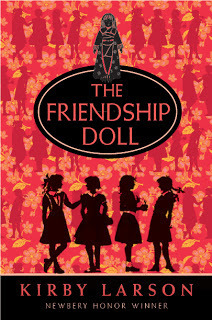
Last spring, I was notified that The Friendship Doll was selected by the membership of the Society of Children's Book Writers and Illustrators (SCBWI), Western region, to receive a much coveted Crystal Kite Award. I say coveted because this is an award bestowed by fellow book creators.
 Deb followed the instructions and wore white gloves!
Deb followed the instructions and wore white gloves!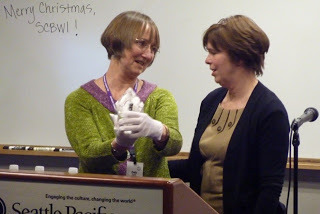
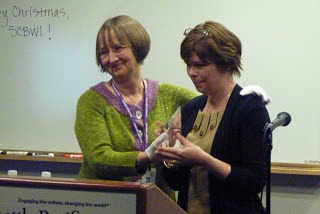
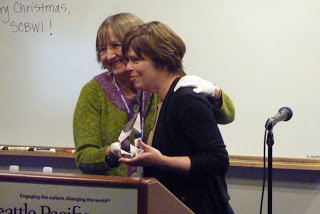
Thursday night, I was toasted at our local SCBWI-Washington meeting (with what Regional Advisor Joni Sensel wittily called a champagne substitute!) and presented with the stunning award by dear friend, Deb Lund. Deb made a charming speech about the 4 "Hs" of Kirby; I was so dazed I only remember one: she said I was "hip." That was almost as good as the award!
I would be remiss if I did not mention the other AdCom members who worked to make the night so special: Kim Baker, Jaime Temairik, and Dana Sullivan who created an amazing banner that greeted us all as we entered the auditorium. If I left anyone out, I'm sorry.
I am touched by this wonderful honor and, as I told the audience members that night, I will dose myself with it when those hard times come. Because they will come. But they are so much easier to bear when you know you are held in the hearts of so many talented and caring book creators.
Published on December 15, 2012 07:00



